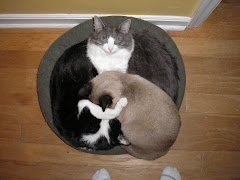Read about it in the NYTimes this morning, and now I've already found two images that will force me to rethink and make more complex my ideas about office work in the early 20th century.
Yeah, well, haven't quite made it to the image uploading stage. At any rate, one image is a photograph of a stenography office pool from 1917. Nothing unusual about that, except each stenographer is black and more of them are men than women. Kind of complicates the stuff I say about office workers in "Taking Dictation." Though it does look they're in a room of their own, out of sight of customers, which I do mention (from Jacqueline Jones's book American Work).Even more intriguing, though: a stenography class at a prison (circa 1920). Wow. Now that's something I hadn't anticipated. Traveling "business school" representatives swept into rural areas in the early twentieth century to sign up young women for secretarial training (my mother was one such young woman so swept up, but not until mid-century), but I had never ever read about prisoners being trained to take up office work as part of a "reform" effort. Though it makes sense--the whole prison/exam connection from Discipline and Punish comes to mind. And maybe it was even thought that learning to do typewriting would have a moral influence on prisoners, in the same way that white women were expected to be good at it because of their supposed superior morals.
It's also interesting that I don't see a lot of "joy" being expressed on these faces, not like the joyful (white women) secretaries on display in the early 20th century textbooks I've been reading--though the one woman in the first image does seem to show a slight smile. Hmm. Need to rethink the whole literacy/affect/division of labor thing. More nuance there than I've thus far expressed.
Thursday, March 03, 2005
Subscribe to:
Post Comments (Atom)

No comments:
Post a Comment